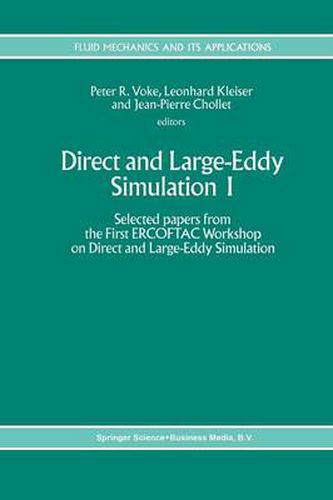Readings Newsletter
Become a Readings Member to make your shopping experience even easier.
Sign in or sign up for free!
You’re not far away from qualifying for FREE standard shipping within Australia
You’ve qualified for FREE standard shipping within Australia
The cart is loading…






This title is printed to order. This book may have been self-published. If so, we cannot guarantee the quality of the content. In the main most books will have gone through the editing process however some may not. We therefore suggest that you be aware of this before ordering this book. If in doubt check either the author or publisher’s details as we are unable to accept any returns unless they are faulty. Please contact us if you have any questions.
It is a truism that turbulence is an unsolved problem, whether in scientific, engin eering or geophysical terms. It is strange that this remains largely the case even though we now know how to solve directly, with the help of sufficiently large and powerful computers, accurate approximations to the equations that govern tur bulent flows. The problem lies not with our numerical approximations but with the size of the computational task and the complexity of the solutions we gen erate, which match the complexity of real turbulence precisely in so far as the computations mimic the real flows. The fact that we can now solve some turbu lence in this limited sense is nevertheless an enormous step towards the goal of full understanding. Direct and large-eddy simulations are these numerical solutions of turbulence. They reproduce with remarkable fidelity the statistical, structural and dynamical properties of physical turbulent and transitional flows, though since the simula tions are necessarily time-dependent and three-dimensional they demand the most advanced computer resources at our disposal. The numerical techniques vary from accurate spectral methods and high-order finite differences to simple finite-volume algorithms derived on the principle of embedding fundamental conservation prop erties in the numerical operations. Genuine direct simulations resolve all the fluid motions fully, and require the highest practical accuracy in their numerical and temporal discretisation. Such simulations have the virtue of great fidelity when carried out carefully, and repre sent a most powerful tool for investigating the processes of transition to turbulence.
$9.00 standard shipping within Australia
FREE standard shipping within Australia for orders over $100.00
Express & International shipping calculated at checkout
This title is printed to order. This book may have been self-published. If so, we cannot guarantee the quality of the content. In the main most books will have gone through the editing process however some may not. We therefore suggest that you be aware of this before ordering this book. If in doubt check either the author or publisher’s details as we are unable to accept any returns unless they are faulty. Please contact us if you have any questions.
It is a truism that turbulence is an unsolved problem, whether in scientific, engin eering or geophysical terms. It is strange that this remains largely the case even though we now know how to solve directly, with the help of sufficiently large and powerful computers, accurate approximations to the equations that govern tur bulent flows. The problem lies not with our numerical approximations but with the size of the computational task and the complexity of the solutions we gen erate, which match the complexity of real turbulence precisely in so far as the computations mimic the real flows. The fact that we can now solve some turbu lence in this limited sense is nevertheless an enormous step towards the goal of full understanding. Direct and large-eddy simulations are these numerical solutions of turbulence. They reproduce with remarkable fidelity the statistical, structural and dynamical properties of physical turbulent and transitional flows, though since the simula tions are necessarily time-dependent and three-dimensional they demand the most advanced computer resources at our disposal. The numerical techniques vary from accurate spectral methods and high-order finite differences to simple finite-volume algorithms derived on the principle of embedding fundamental conservation prop erties in the numerical operations. Genuine direct simulations resolve all the fluid motions fully, and require the highest practical accuracy in their numerical and temporal discretisation. Such simulations have the virtue of great fidelity when carried out carefully, and repre sent a most powerful tool for investigating the processes of transition to turbulence.